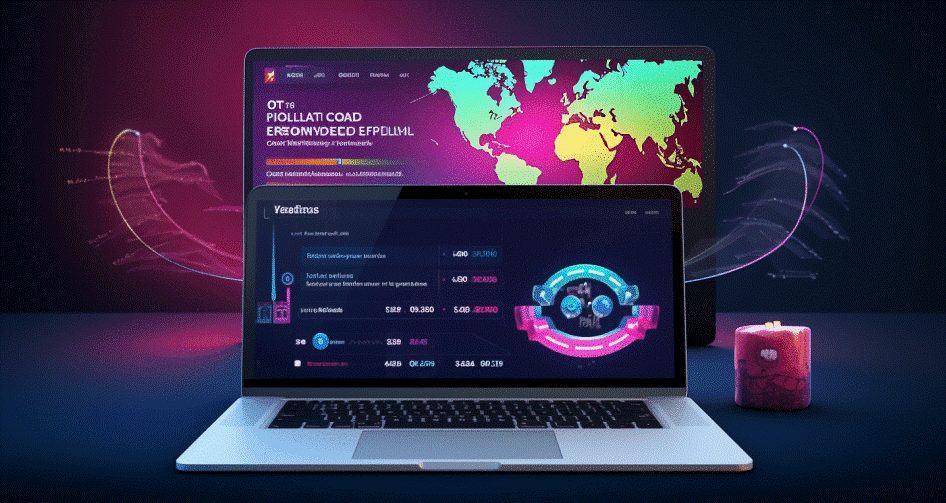Explore the 10 best corporate travel platforms that streamline travel management for businesses. Discover features, benefits, and pricing insights from leading solutions like SAP Concur, Navan, and Amex GBT to find the perfect fit for your company’s travel needs.
Explore the 10 best corporate travel platforms
Here’s an expanded list of the best corporate travel platforms, delving deeper into their features, benefits, and considerations for businesses interested in travel management solutions.
1. SAP Concur
Key Features:
- Comprehensive Travel Management: SAP Concur provides a robust travel booking system that integrates seamlessly with expense management and invoice tools. This ensures that companies can manage travel effectively from start to finish.
- AI-Driven Compliance: It offers intelligent policy compliance features that help organizations enforce travel policies automatically, ensuring employees adhere to specified travel budgets and guidelines.
- Risk Management: The platform includes real-time alerts for travel disruptions or emergencies (like natural disasters or health risks), which is essential for duty of care responsibilities.
Best For: Large enterprises that require seamless integration with ERP systems (like SAP or Oracle).
Pricing: Custom quotes based on size and needs.
2. Navan (formerly TripActions)
Key Features:
- AI-Powered Recommendations: Navan utilizes artificial intelligence to provide personalized travel recommendations to save costs while improving traveler satisfaction.
- Real-Time Expense Tracking: The platform features auto-receipt capture for expenses, making it easier for companies to keep track of spending in real-time.
- Innovative “Guardrails”: These self-imposed limits ensure that employees book within set budgets while still allowing flexibility.
Best For: Small to medium-sized enterprises (SMEs) and startups that need an intuitive, all-in-one travel solution.
Pricing: Free core platform with paid premium support available, allowing businesses to scale as needed.
3. American Express Global Business Travel (Amex GBT)
Key Features:
- Global Travel Management: Amex GBT provides an extensive global presence with 24/7 support, allowing businesses to manage travel across various international markets effortlessly.
- Traveler Safety Tools: Integrated tools for duty of care, including tracking travelers’ locations and providing emergency evacuation services in case of crises.
- Dashboard for Analytics: Exhaustive dashboards and analytics tools help businesses visualize their travel expenses, optimize spending, and assess trends over time.
Best For: Multinational corporations that require robust crisis management and global support mechanisms.
Pricing: Custom pricing structure that varies based on the specific needs of the corporation.
4. Egencia (Expedia Group)
Key Features:
- Integrated Inventory: Egencia offers a wide array of inventory options, pulling in resources from Expedia, and ensuring competitive pricing and availability for flights, hotels, and ground transportation.
- Policy Enforcement: The platform has strong features for enforcing travel policies, ensuring that bookings comply with company guidelines around preferred vendors and spending limits.
- Support for Travelers: Real-time updates inform travelers of any changes or issues with their itineraries, improving the overall travel experience.
Best For: Mid-sized organizations looking for a balance of cost control with a user-friendly interface.
Pricing: Generally operates on transaction-based fees adjusted according to volume.
5. TravelPerk
Key Features:
- Flexible Booking Options: One of TravelPerk’s standout features is FlexiPerk, which allows travelers to cancel bookings at no penalty or receive an 80% refund, providing greater flexibility and adaptability.
- ESG Reporting: Companies increasingly consider sustainability; TravelPerk offers comprehensive tools to track and report carbon emissions, helping businesses manage their environmental impact.
- Dedicated Support: Travelers have access to dedicated support through multiple channels, including WhatsApp and Slack, ensuring they receive assistance whenever needed.
Best For: Hybrid teams and organizations that require flexibility and sustainability in travel management.
Pricing: Offers a free basic tier, with premium plans starting at $99/month for advanced feature access.
6. CWT
Key Features:
- Negotiated Rates: CWT provides clients access to competitive negotiated rates for hotels and airlines worldwide, significantly reducing travel costs.
- Virtual Payment Solutions: To enhance cash flow management, CWT offers virtual payment options, including single-use cards specifically designed for travel procurement.
- Predictive Analytics: Advanced data analytics features help companies forecast travel spend, allowing them to plan budgets more effectively.
Best For: Large enterprises with complex, global travel needs seeking to optimize their travel spending effectively.
Pricing: Custom quotes based on specific service needs.
7. Deem (Enterprise Travel Suite)
Key Features:
- Personalization: Deem offers AI-driven travel personalization, ensuring travelers receive tailored recommendations that fit their preferences and company policies.
- Expense Management Integration: The platform integrates seamlessly with popular expense management systems like SAP, NetSuite, and QuickBooks, simplifying the expense reporting process.
- Multi-Lingual Support: Its global platform supports multiple languages and currencies, catering to businesses with diverse international teams.
Best For: Companies with a global footprint that require versatile and user-friendly solutions.
Pricing: Depending on the service options, it may involve per-user or transaction-based fees.
8. Airbnb for Work
Key Features:
- Corporate Housing Options: This platform specializes in corporate housing and longer-term accommodations, making it easier for employees who travel for extended periods.
- Centralized Billing: Airbnb for Work provides businesses with centralized billing options, making expense management easier to handle and track.
- Team Coordination Tool: Features that allow teams to coordinate their trips make it ideal for business group travel and offsite events.
Best For: Organizations with remote teams needing longer stays for business purposes or team-building offsite.
Pricing: Free to use, but service fees will apply based on bookings.
9. Pana
Key Features:
- Hybrid Concierge Service: Pana combines AI with a human travel concierge, providing personalized service and support for business travelers.
- Automated Expense Reporting: The platform simplifies expense reporting with automated receipt matching, providing more time for employees to focus on their core responsibilities.
- 24/7 Support: Travelers can get assistance at any time of day, ensuring they feel secure and supported during their trips.
Best For: Small to medium-sized enterprises looking for a balance of automated solutions with personalized assistance.
Pricing: Starts at $15 per traveler per month.
10. Rocketrip (now Emburse)
Key Features:
- Incentive System: Rocketrip incentivizes employees to save on travel costs by offering rewards based on the savings generated when they book below budget.
- Behavioral Analytics: The platform employs predictive analytics to track spending behaviors and optimize travel policies based on collected data.
- Engagement Tools: Companies can use gamified savings reports and tracking to engage their employees in cost-saving efforts.
Best For: Companies aiming to reduce travel costs while promoting employee engagement and flexibility.
Pricing: Custom pricing depending on service needs.
Side-by-Side Vendor Comparison
| Platform | Key Strengths | Best For | Pricing Model | Global Reach | Unique Perk |
|---|---|---|---|---|---|
| SAP Concur | ERP integration + compliance | Large enterprises | Subscription + fees | 150+ countries | Real-time risk alerts |
| Navan | AI cost savings + user-friendly | SMEs/startups | Freemium | 40+ countries | Carbon emission tracking |
| Amex GBT | Crisis management + 24/7 support | Multinationals | Custom | 140+ countries | Emergency evacuation services |
| Egencia | Policy enforcement + Expedia inventory | Mid-sized companies | Transaction fees | 60+ countries | Real-time traveler tracking |
| TravelPerk | Flexible cancellations + ESG focus | Hybrid/remote teams | Subscription | 80+ countries | FlexiPerk (80% refund on cancellations) |
| CWT | Negotiated global rates | Enterprises | Custom | 150+ countries | Virtual payment solutions |
| Deem | Multi-currency/ERP integration | Global teams | Per-user/transaction | 50+ countries | AI personalization |
| Airbnb for Work | Corporate housing | Remote/extended stays | Service fees | 220+ countries | Team trip coordination |
| Pana | Human + AI concierge | SMEs needing hybrid support | Per-user subscription | 30+ countries | 24/7 traveler support |
| Emburse (Rocketrip) | Cost-saving incentives | Budget-focused teams | Custom | 20+ countries | Gamified employee rewards |
Best Overall: Navan (formerly TripActions)
Why It’s #1:
Navan excels in the corporate travel landscape for its AI-driven cost optimization, user-friendly interface, and flexibility suited for modern teams. The platform’s innovative feature set, including real-time policy “guardrails,” carbon tracking, and 24/7 traveler support, makes it ideal for SMEs and larger enterprises alike.
Its freemium model allows smaller businesses to get started at no cost, while premium tiers provide advanced analytics and ESG reporting capabilities. For large, global enterprises, SAP Concur or Amex GBT may serve as better fits, but Navan’s strategic balance of innovation, practicality, and affordability ultimately earns it the top spot in corporate travel solutions.
Key Considerations for Choosing a Platform
- Company Size:
- SMEs: Solutions like Navan, TravelPerk, or Pana may offer the best mix of features and affordability.
- Enterprises: SAP Concur, Amex GBT, and CWT are better suited for larger-scale operations.
- Compliance Needs:
- If strict adherence to policy is paramount, consider SAP Concur or Egencia, both known for strong compliance features.
- For companies wishing to promote cost-saving behavior without rigid policies, Navan or Emburse could be the better option.
- Global vs. Regional Focus:
- For organizations with a significant international presence, Amex GBT, SAP Concur, or CWT are recommended.
- Regional-focused solutions like TravelPerk or Egencia may adequately serve companies with less dispersed travel needs.
- Sustainability Initiatives: If sustainability is a goal, consider partners who offer comprehensive ESG tracking, such as TravelPerk or Navan, both of which provide tools to monitor and manage carbon footprints.
Final Recommendations:
Lastly, consider leveraging Airbnb for Work for extended stays or team offsite events as well as negotiating with larger vendors (CWT/Amex GBT) for frequent travel arrangements to maximize cost-efficiency. Testing platforms via free trials offered by TravelPerk or Navan before committing can also help choose the right match for your company’s travel needs. Each company’s specific requirements vary, so it’s beneficial to assess functionality, customer support, and the pricing structure before selecting a travel management partner.
FAQs
1. What is a corporate travel platform?
A corporate travel platform is a software solution designed to help businesses manage their travel arrangements, including bookings, expense reporting, and compliance with company travel policies.
2. How do corporate travel platforms save money?
These platforms often provide access to negotiated rates, automated expense tracking, and AI-driven recommendations, allowing companies to optimize their travel spend and adhere to budgets.
3. Are corporate travel platforms suitable for all company sizes?
Yes, there are tailored solutions for businesses of all sizes. Smaller enterprises might benefit from platforms like Navan or TravelPerk, while larger corporations may need features from SAP Concur or Amex GBT.
4. How can I ensure employee compliance with travel policies?
Many platforms, such as SAP Concur and Egencia, offer strong compliance features that automatically enforce travel policies and provide real-time alerts for any deviations.
5. What features should I look for in a corporate travel platform?
Key features to consider include ease of booking, expense integration, AI recommendations, traveler safety tools, and support for global travel management.
6. Can I try a corporate travel platform before purchasing?
Most platforms, like TravelPerk and Navan, offer free trials or freemium models, allowing businesses to explore functionalities before making a financial commitment.
7. How important is traveler support?
Traveler support is crucial for ensuring employee safety and satisfaction during trips. Look for platforms that offer 24/7 assistance via various channels, such as chat, phone, or messaging apps.
8. What are the sustainability options in corporate travel?
Many platforms, like TravelPerk and Navan, include tools for tracking carbon emissions and promoting sustainable travel practices, which is increasingly important for environmentally conscious businesses.












